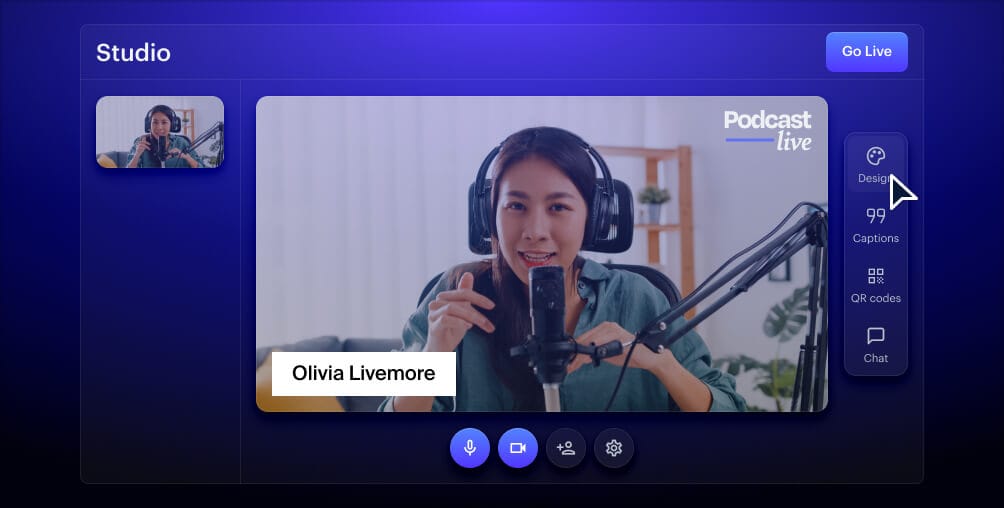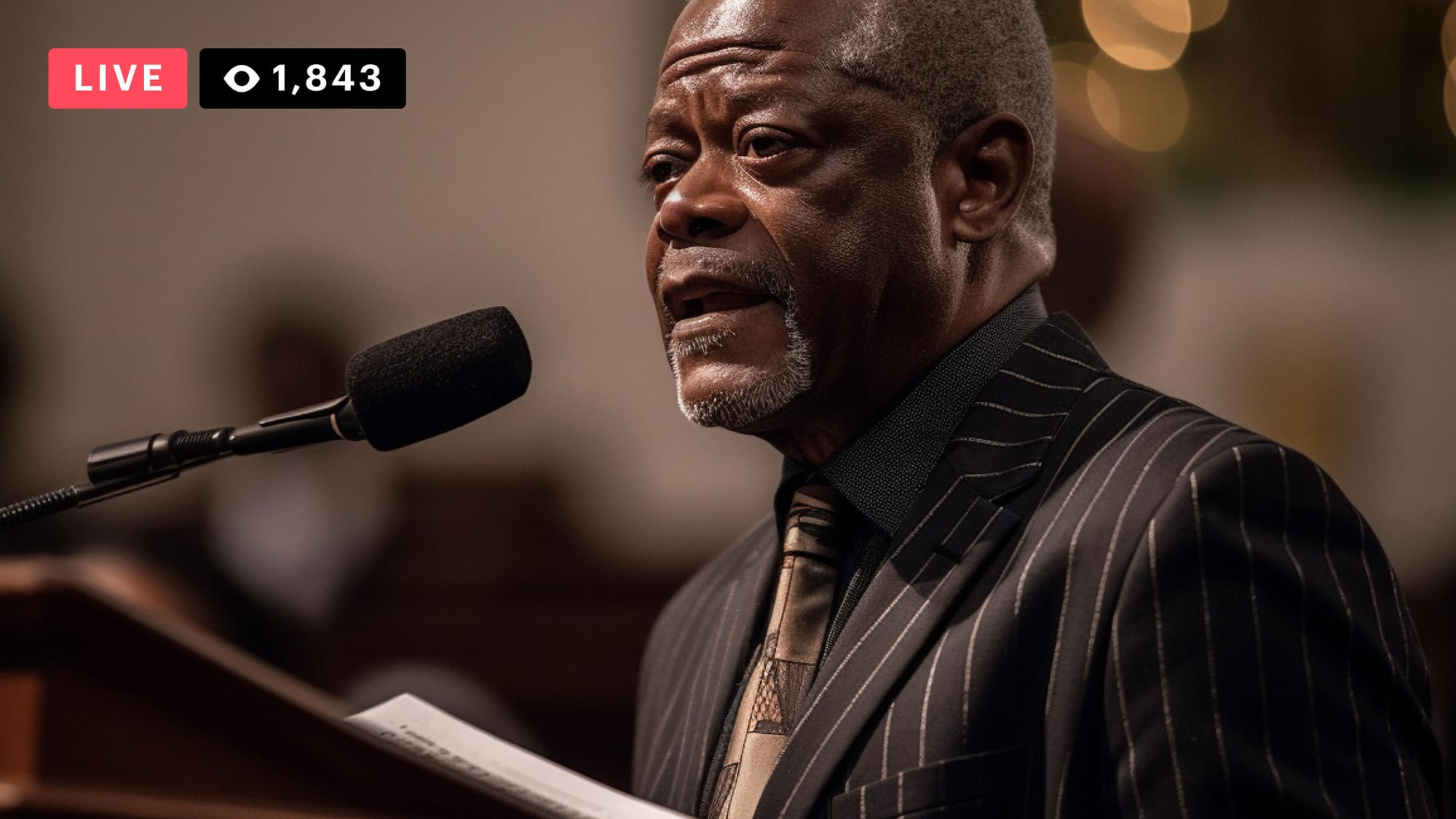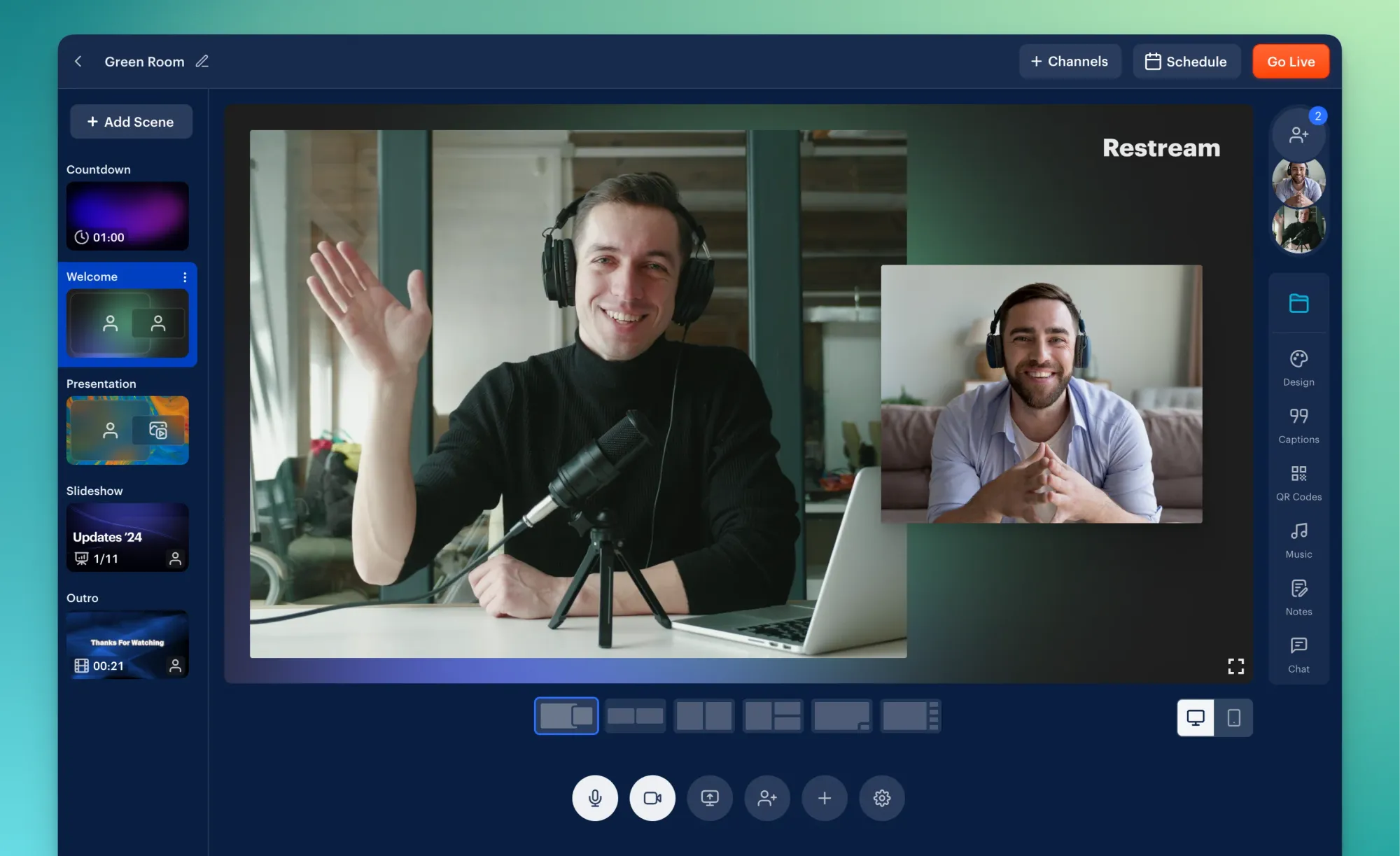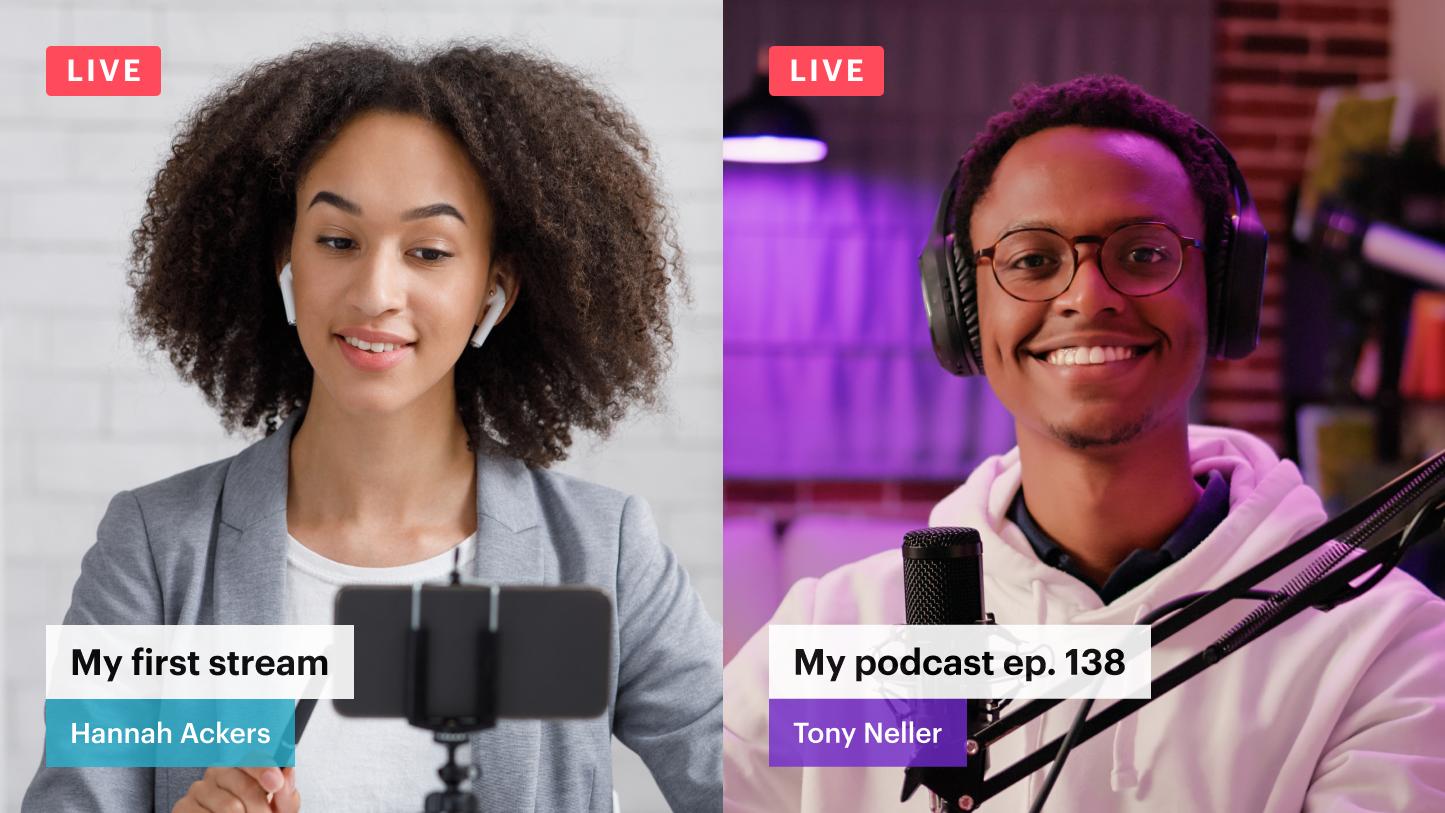Podcasting is a big industry that keeps growing. The global market size is estimated to reach $130.63 billion by 2030. The number of podcast listeners keeps growing too, reaching 464.7 million global listeners in 2023.
If you decide you have an idea worth sharing and want to start a podcast, there’s never been a better time. But if you want to tap into those millions of listeners and establish an audience, you need to invest some time in podcast promotion. This ultimate guide to podcast marketing covers how to promote a podcast, including tips for podcast SEO.
Let’s start promoting your podcast!
Podcast marketing strategies and tips
We’ve compiled 23 podcast promotion tips and strategies to help you boost exposure and market your podcast to new listeners. They’re split into three categories: production, optimization, and marketing.
Podcast production
Podcast promotion starts with production. There are simple steps you can take as you create your podcast episodes to ensure they rank more highly in SERPs. These tips also make it easier to optimize your podcast for SEO and market it once it’s published.
1. Choose an appropriate format for your target audience
Podcasts come in a variety of formats. The most common are:
- Interviews
- Conversations with two or more co-hosts
- Monologues
- Panel discussions
- Nonfiction narrative storytelling
- News reporting
- Fictional stories
You can develop your own format, but it will be easier to build an audience with the above styles, as podcast listeners are more familiar with them.
How do you choose the right format? Identify your target audience first. If your podcast is for professionals in the interior design industry, for example, then they’ll likely be most interested in interviews with experts in the field. Consider the goals of your podcast and picture your typical listener to help you decide on the right format.
2. Check podcast trends
As you develop your podcast, pay attention to current podcast trends. They can help you stay ahead in the industry and plan out the best podcast marketing methods for your show. Some trends to watch include:
- Video podcasts are growing significantly. According to the Cumulus Media and Signal Hill 2023 Fall Report, YouTube has gone from the third-most accessed platform for podcasts in 2021 to the number-one accessed platform for podcasts as of 2023.
- The platform you publish on doesn’t matter much. The Cumulus Media report also found that podcast listeners have no problem switching platforms or signing up for new platforms in order to keep listening to their favorite shows.
- More podcasters are using AI. Automatic transcription, text-based editing, AI-audio enhancement, and AI-produced show notes and promotional materials are all part of the podcast AI trend. There’s even an AI podcast SEO tool that lets you look up high-ranking keywords in podcast directories like Spotify and Apple Podcasts.
- Advertisers are investing more in podcasts. More than two-thirds of U.S.-based marketers say they see a return on investment of between $2 to $6 for every dollar spent on podcast ads. That’s a high ROI compared to other mediums, and it will keep advertisers coming back for more.
What do these trends mean for you as a podcaster? There are big advertising opportunities in podcasts, as well as listeners ready to pledge their loyalty to your show — if you deliver high-quality content.
3. Choose the right niche to attract an audience
One of the most important things you can do to market your podcast is simply create great content. When you start out, focus on producing episodes that are valuable for your listeners, and make a content plan. Keep these pointers in mind for attracting an audience:
- Make a content plan. Have a topic or plan for each episode. Know what you’ll talk about. Nobody wants to listen to a podcast host rambling on without any clear purpose.
- Love your topic. Have a passion for what you’re speaking about on your podcast. It makes it easier to produce the podcast and easier for the audience to listen to. Host of the Marketing Millennials podcast Daniel Murray emphasizes how important it is to like what you’re doing, saying “Double down on things that you’re great at and like doing, and then it makes the process really easy and fun to do. It keeps you doing a podcast for six years and probably more.”
- Stand out. You can distinguish yourself from the thousands of other podcasts out there by going deep into your topic. Do your research and develop deeper knowledge on your topic than your competitors.
4. Find and use keywords
Since Google’s update that pinpoints verbalized keywords to help podcasts appear in search results, keywords have become important for podcasts. In short, keywords make it easier for your target audience to find your show. Here’s how to use keywords for your podcast in three steps:
- Start with a topic, then make a list of keywords related to that topic. You can use free tools like Google Trends to see what topics and keywords people are searching for.
- Once you have your list of keywords, try to incorporate them into your podcast episodes. If you speak clearly enough, Google’s natural language processing (NLP) features will pick out your verbalized keyword, increasing the chances you’ll rank for it.
- Add keywords to your podcast description and title if you can. But don’t add your keyword repeatedly for the sake of adding it, known as “keyword stuffing.”
When writing your podcast description, keep in mind that Apple Podcasts doesn’t let you go over 4,000 characters. Google displays between 155 and 160 characters of a description, and most other podcast platforms display between 70 and 150 characters
Content marketer Dan Misener did some digging on podcast description lengths. Using only Apple Podcasts, he found the average character length for shows was 243, with a significant uptick at 600 characters.
5. Speak clearly
Speaking with a clear, strong voice is podcast production 101. Developing a “radio voice” helps listeners understand what you’re saying. As we saw with podcasts and keywords, speaking clearly is also good for podcast SEO.
When you record your podcast, remember to sit up straight and project your voice as best you can. Having a quality microphone with a pop filter also helps ensure smooth audio for your podcast recording.
6. Reference older episodes
When promoting your podcast, you may become focused on marketing each new episode that comes out. But if you’ve been making your podcast for a while, don’t forget about your catalog of older episodes. Potential listeners can discover your podcast if one of these episodes covers a topic that interests them. Plus, getting more downloads on older episodes helps boost your listener stats.
When recording new episodes, always try to mention a previous episode if it’s relevant to what you’re discussing. Remind listeners that they can go back and listen to older podcast episodes in your catalog. Also, put the name of the older episode in the podcast’s show notes so listeners can find it easily.
7. Consider a video podcast
Podcasts are no longer an audio-only medium. In recent years, video podcasts have become increasingly popular because they engage listeners visually. Your audience can see your facial expressions and gestures, you can add small simple animations or B-roll to complement your dialogue and much more. You can also more easily repurpose them to post on social media platforms like Instagram Reels or TikTok.
Most major podcast platforms, including Spotify and Apple Podcasts, now support video podcasts. YouTube, a video-first platform, also added podcasts to YouTube Music in 2023. Publishing video podcasts — along with promoting and monetizing them — has never been easier.
Now is also a good time to start a video podcast because they have less competition for listeners. According to Libsyn, only 7% of podcasts on Apple Podcasts have video.
8. Use the right podcast production tool
The software or tool you use to record and edit your podcast can help or hinder your promotion efforts. Some user-friendly options like Podbean and Buzzsprout have marketing and monetization options built-in. Other tools, like Restream Studio, make creating professional-quality podcasts and video podcasts simple.
With Restream, you can go live on a variety of streaming platforms, then save a recording of your broadcast to repurpose into a podcast episode. You can also use the record-only mode in Restream Studio to record your podcast or video podcast using Restream’s features. Increase the quality of your podcasts with Restream thanks to:
- Split-track recording for easier editing
- High-res audio
- Noise cancellation
- Echo suppression
- Looped background music
- Inviting guests via a secure link
- Up to 100 GB of content storage
- Guest volume control
- Professional visual branding (for video podcasts)
If you want to use live streaming to promote your podcast or record a live podcast episode, you can use Restream Studio to go live on YouTube, Facebook, Twitter, LinkedIn, Twitch and over 30 other platforms simultaneously.

Create stunning live videos
Restream Studio is the easiest way to create high-quality live videos on multiple platforms at once. It's user-friendly and offers an engaging viewer experience.
Podcast optimization
After you record and edit your podcast episode, keep the following optimization tasks in mind before publishing.
9. Create a website for your podcast
Maybe you started a podcast as a way to promote your business, blog or website. If so, you should create a landing page dedicated to your podcast on your site. Have a list of all your episodes available on your landing page so listeners can find them easily. Additionally, consider hosting the episodes on your site with an embedded audio player, so website visitors don’t have to navigate somewhere else to listen. If you don’t have an embedded player, at least include descriptions and links for each episode in the list.
If you don’t already have a website to attach your podcast to, create a new one. Some podcast hosting platforms come with a website when you sign up for a hosting plan, making it much easier to manage. Having a place for your podcast to live online besides a podcast directory will greatly improve discoverability.
10. Include a transcript
On your podcast website, post the transcripts for each episode. Why? Although verbalized keywords are becoming more pertinent, Google is still better at finding text keywords for now. A text transcript with your keywords is easier for Google to index and therefore more likely to be included in search results. Use a service like Descript or Otter.ai to get the transcript, then clean it up and post it along with your podcast episode.
Once you have the transcript, you can also write a blog post for your podcast episode. The transcript might be too long to post as is, so pull out the main takeaways and reformat them for readability. Include bullet points, shorten paragraphs, add subheadings, and use images to make the post more engaging for readers.
You might wonder if a transcript is really necessary. Podcaster Danny Brown explains on One Minute Podcast Tips that a transcript is essential for two reasons:
- Accessibility. “A good size of the population has hearing difficulties or is completely deaf. And for them, transcripts offer a way for them to enjoy the episode too.”
- SEO. “It can actually offer you SEO benefits for your podcast. Google and other search engines can pull snippets from your transcripts of really hard-to-find keywords and topics. Having transcripts means more likelihood to be found on search, which is great.”
11. Optimize your podcast’s length
How long should a podcast be? According to Pew Research, 54% of top podcasts are between 20 and 50 minutes long. But your podcast might be better suited to a shorter or longer duration. A show reporting industry news likely won’t run as long as a podcast centered on interviews, for example. You’ll have to determine which length works best for your format and audience, but keep in mind that most listeners don’t want to devote hours and hours to podcasts.
Typical podcast lengths and their formats are:
- 15 - 30 minutes: Choose this length if you focus on daily news, trends and stories. It’s also best suited for a one-host podcast.
- 30 - 60 minutes: You can get away with 30- to 60-minute podcasts if you do interviews, reports, commentary, or narrative storytelling. This duration also suits shows with two hosts or frequent guests.
- 60+ minutes: Your podcast can last more than one hour if you have several guests, a panel discussion, or a live show. Long podcasts work better when there are multiple people involved, rather than a solo host.
12. Split your podcast into chapters
If your podcast is more than 15 minutes, organize it into chapters. Some podcasting platforms support clickable chapters, which read like a table of contents. This allows listeners to quickly scan the topics of your podcast and skip to the section they’re most interested in. It also appears more organized to search engines.
The principle is the same as creating timestamps for YouTube videos and placing them in the video’s description. If you split your podcast up into chunks, it’s more user-friendly, giving it a better chance of ranking highly in SERPs.
13. Publish your podcast episodes at the right time
To better optimize your podcast, it’s crucial to publish it at the right times. Your listeners probably have preferred times of day for podcast listening, and you want to capitalize on that as much as possible. If you’re a new podcast and don’t have any listener data, check the publishing times of other podcasts in your niche and identify trends.
Once you have your own data, look through it to see when people listen to your podcast most often. Run some experiments with publishing times to see if a certain time of day does better than another.
Podcast marketing
After you publish your podcast episode, there’s still plenty of promotion work to be done. From networking and sharing on social media to email newsletters and paid ads, your podcast marketing strategy should be multi-pronged.
14. Encourage reviews from your listeners
Listener reviews are one of the most powerful podcast promotion tools you have. On Apple Podcasts specifically, a high number of positive reviews within your first eight weeks of launching is what gets your podcast into the New & Noteworthy featured podcast section.
Google also factors reviews into search results, so the more positive reviews you have, the better your chances of ranking highly. Reviews also boost social proof, letting potential listeners know whether your podcast will be interesting and relevant to them. Always add a call to action (CTA) at the end of each episode asking listeners to leave a review if they enjoyed the podcast.
15. Share your podcast on social media
Having a website for your podcast is a good start, but you should also create social media profiles for it as well. Get creative with your social media posts, too. Don’t just make a post promoting your latest episode with a link. Use one of your episodes (it doesn’t even have to be the most recent one) as a jumping-off point for a conversation on your Facebook page or X (Twitter). Focus on engagement and discussions with fans of your podcast. You can also publish teasers of your latest podcast episode using audiograms.
You don’t have to put your podcast on every social media platform right after you launch it, though. Don’t overwhelm yourself. On Buzzsprout’s podcast, How to Start a Podcast, hosts Gilon and Alban talk about how they didn’t have social media presences for Buzzsprout until years after it was launched,
“Don't feel like you've got a rush to get all of this [social media profiles for your podcast]. Just go and pick one, pick the one you're most comfortable with. If you live on LinkedIn, let's do your work on LinkedIn. If you think the audience for your podcast are people who are really active on Reddit, then focus on Reddit. If it's a TikTok audience, then focus on TikTok.”
16. Repurpose your podcast as a YouTube video
Repurposing content, whether it’s a podcast, video, or blog post, is a smart way to promote your brand. You can take your recorded MP3 file and convert it to an MOV file for a YouTube video. You may not have live podcast footage to add, so find some neutral stock footage. Add a thumbnail with your podcast logo and a photo of your guest if you have one, and add links or cards throughout the video. You can also use YouTube’s podcast features to optimize it for podcast listeners, making it more likely that it’ll appear on YouTube Music’s Podcast homepage.
Why bother converting your podcast into a YouTube video? Aren’t listeners more apt to use a podcast platform like Spotify or Apple Podcasts? Repurposing your podcast as a video has enormous SEO potential:
- Google values video as much as text.
- You can use an optimized title and description for YouTube.
- YouTube is a search engine in itself.
- YouTube videos are more shareable on social media.
17. Prepare three episodes for your podcast launch
Have your first three episodes edited and ready to publish on launch day, even if it means moving your launch date back a bit. You want to have enough content for people to engage with your podcast, and one episode often isn’t enough. Especially if you do shorter episodes, listeners who like your podcast and have nothing beyond the first episode to listen to on launch day will be disappointed.
18. Host a contest to get reviews and subscribers
Contests and giveaways are a fun promotional strategy, and once you have enough regular listeners, you can use them to get more reviews. Ask listeners to leave a review on your podcast to enter the contest or giveaway and randomly select a winner after a week. You can also ask listeners to subscribe to your podcast as a requirement for entry. Prizes for your contest might be:
- Free podcast merch if you have it
- A shoutout on next week’s episode
- A personalized audio message from you
- A custom-made gift
19. Collaborate with other podcasters
As the podcasting community keeps growing, it shouldn’t be hard for you to find other podcasters to collaborate with. Partnering up with other shows helps both of you gain exposure. Join podcast networking groups to connect with other podcasters who have similar shows. You can use these groups to offer yourself as a guest on someone else’s podcast or to ask for guests on yours.
Appearing as a guest on another podcast allows you to cross-promote. Plug your show when you appear as a guest, then promote that podcast on your social media channels. You can introduce your listeners to a new show that might interest them and tap into the fan base of the other podcast.
20. Enroll in HARO
Use the Help A Reporter Out (HARO) platform to make contact with journalists. You can sign up as an authoritative source on the topic of your podcast, and media professionals will reach out to you when they need quotes for articles, TV spots or radio reports. When they quote you, they can link back to your podcast website and get you more exposure.
You can also pitch journalists and publications directly, asking them to write a story about your podcast. Tim Ferriss gives this advice in his blog post about podcasting: “Get transcripts and send highlights with pitch ideas to print/text journalists. I have done this with several outlets, and it’s resulted in some outstanding original pieces…who came up with the story angle on their own.”
21. Buy paid ads
Paid ads are one of the fastest and most effective ways to market your podcast. Content marketing and organic searches can be useful, and you shouldn’t neglect these strategies, but they can also take time before you see results. When it comes to buying ads for your podcast, you have several options:
- Ads on other podcasts: Many podcasts use ads to support the production of their shows and prefer to promote other podcasts.
- Ads on podcast apps: Some podcasting apps allow you to buy ads to position your podcast at the top of your category list.
- Google Ads (formerly Google Adwords): Your ad displays on Google when users search for your podcast or keywords related to it.
- Facebook ads: If you have a Facebook page for your podcast, use Facebook’s ad functions to promote it.
- Instagram ads: Podcasts are an audio-first medium, and Instagram is more visual. Still, if you have high-quality images or videos to promote your podcast, you can use them for Instagram ads.
- LinkedIn ads: With ads on LinkedIn, you can target a more professional audience for your podcast.
Choosing the right platform for your paid ads depends on your podcast’s niche, target audience, and budget. An ad for a podcast about gaming probably wouldn’t do as well on LinkedIn, for example.
Libsyn’s Chief Revenue Officer Dave Hanley endorses podcast ads, saying on an episode of the Libsyn podcast The Feed, “Podcasting advertising unduly works, reaching an estimated 120 million listeners in the U.S. each month.”
22. Send out a newsletter
Email marketing has an impressive ROI: For every dollar you spend on email marketing, you can expect a $36 return. Start a newsletter for your podcast as another way to connect with your fans. Subscribers may already get reminders when you publish a new episode, so make your email newsletter more than that. Curate a list of content you find interesting for the week, add links to any podcasts you appeared on as a guest, and share exclusive content about your podcast that only email newsletter subscribers can access.
23. Submit to podcast directories
Adding your podcast to popular directories or “podcatchers” like Spotify and Apple Podcasts will drastically improve your discoverability. People who use podcatcher apps are already podcast fans, so they’ll be more inclined to give your show a listen if they stumble across it. Submitting your podcast to a directory is a crucial step in your promotion strategy.
Podcast hosting and production tools
You have many choices when it comes to a podcast hosting service, but some offer more benefits than others. Some all-in-one tools allow you to create, edit, host, distribute and monetize your podcast. Others integrate directly with apps like Spotify so you don’t have to worry about submitting your RSS feed to get your podcast to appear.
Below are four useful tools that will help you host, produce or promote your podcast.
Spotify for Podcasters
Previously known as Anchor, Spotify for Podcasters is a beginner-friendly podcast platform that lets you record and edit audio, then publish it as podcast episodes. It also pushes your podcast to Spotify and allows you to monetize with ads, listener subscriptions or listener donations. Those new to podcasting will find the support they need with Spotify for Podcasters. The best part? It’s free.
PodBean
PodBean is a hosting service for podcasts that also has its own app for podcast directories. You can start hosting a podcast for free and upload up to five hours of audio. To get unlimited audio uploads, you can pay $9 per month. A subscription with PodBean also gets you a dedicated website for your podcast. For monetization, you can either collect donations from listeners or sign up for sponsorship.
Buzzsprout
Buzzsprout has a user-friendly interface and makes hosting and managing a podcast easy. It has a built-in transcription tool, an embed player, a text editor for show notes, and it provides you with a podcast website you can use for affiliate marketing. You can sign up for the free plan, but Buzzsprout removes your episodes after 90 days at that tier. Their least expensive plan is $12 per month.
Castos
Castos is a powerful podcast hosting solution that integrates with both WordPress and Spotify. You can get a customizable player to embed on your website, and if you pay $19 per month, you get unlimited upload volume and download bandwidth.
Let’s wrap up
Podcast marketing is easy if you have the right tools. Whether you’re doing a podcast as a personal project or using it to promote your business, you need to implement podcast marketing strategies if you want to grow your audience. By using the tips in this ultimate guide, you’ll be off to a good start!







